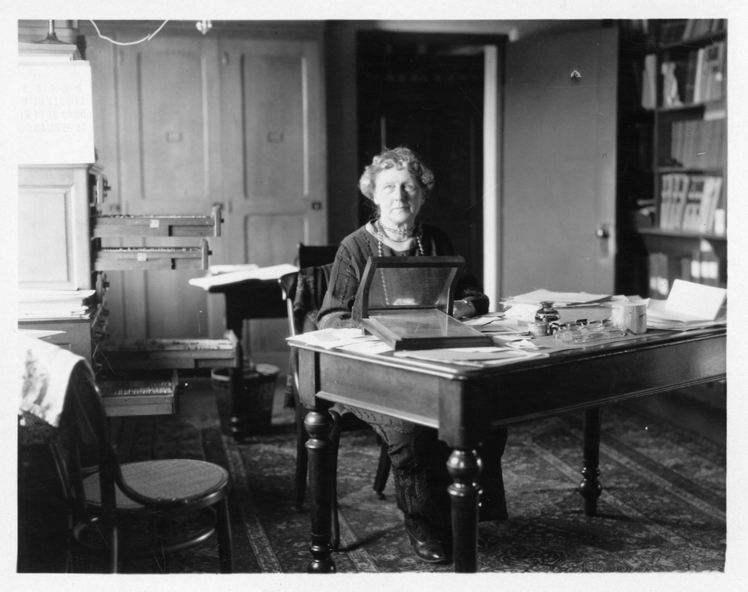Annie Jump Cannon

Credit: Smithsonian Institution (US)
Occupation: Astronomer and Curator
Year born: 1863
Research Areas: Stars, Stellar Classification, Spectroscopy
"In our troubled days it is good to have something outside our planet, something fine and distant for comfort"
Source: Annie Jump Canon (L. Hennessey, 1998)
Early Life
Annie was born on 11 December 1863, in Dover, Delaware, USA. From a young age, she had a love for the night sky. She used to climb through a trapdoor in the roof to watch the stars. Her mum encouraged her interest and taught her the names of the constellations.
As she got older, Annie's passion remained. She studied physics and astronomy at Wellesley College, USA. A few years after college, she visited Europe to take photos of a solar eclipse. However, soon after Annie arrived, her mother sadly died. Annie had to go back to the USA to find a job.
Career Highlights
At this point in history, there were very few jobs for women in science. Annie found work in a junior school as a physics teacher. When she wasn't teaching, she spent her time taking extra lessons in astronomy. She was very interested in the science of light and what it could be used for.
When she was 33, Annie got a job as a research assistant at the Harvard Observatory. Her job was to examine the data collected by the male astronomers. The team were creating a catalogue of the stars. This would include a map of the night sky as well as a way of classifying stars. Classifying means putting things into different groups based on their similarities.
Annie's work was fast and accurate. She could classify 3 stars a minute. During her career, she classified about 350,000 stars. No one else in the world was as fast as her.
While the catalogue was being put together, the team disagreed about the best way to classify stars. Annie put forward a new, simple idea. Her idea was to group stars by their surface temperatures. Her system is known as the OBAFGKM system and is still used today.
Annie was not paid well for her efforts. She earned a lot less than the secretaries at Harvard. In 1907, Annie finished her studies and got a Master’s degree. In 1911, Annie finally received a promotion for her hard work. She became the Curator of Astronomical Photographs at Harvard.
Legacy
Annie was the first woman to get an honorary doctorate from Oxford University, UK. She became a curator at Harvard and won the Henry Draper Medal. In 1935 she created the Annie J Cannon Prize. The annual prize is still given out each year. It is for women who have done outstanding work in astronomy at the start of their careers.
Other Interests
Annie also worked to improve the rights of women. She fought for women’s suffrage and was a member of the National Women’s Party.

